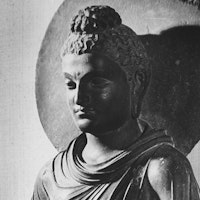When practicing contemplation, they should wish that all beings see truth as it is, and be forever free of opposition and contention.
Gautama Buddha

See Truth As It Is
Topic: Truth, Law, & Principle
Sitting cross-legged, they should wish that all beings have firm and strong roots of goodness and attain the state of immovability.
Cultivating concentration, they should wish that all beings conquer their minds by concentration, ultimately, with no remainder.
When practicing contemplation, they should wish that all beings see truth as it is, and be forever free of opposition and contention.
Gautama Buddha, also known as Siddhartha Gautama, was a spiritual teacher and the founder of Buddhism. Born in the 6th century BCE in Lumbini, now modern-day Nepal, he was destined for greatness. At the age of 29, he renounced his luxurious life as a prince and embarked on a spiritual quest to find the ultimate truth about human suffering and the nature of existence.
After years of intense meditation and self-discipline, Gautama attained enlightenment under a Bodhi tree in Bodh Gaya, India, at the age of 35. He became the Buddha, which means "the awakened one" or "the enlightened one." Gautama Buddha spent the rest of his life teaching the Four Noble Truths and the Eightfold Path, which formed the core principles of Buddhism. His teachings emphasized the importance of overcoming desire and attachment to achieve liberation from suffering. Known for his compassion and wisdom, Gautama Buddha's teachings have had a profound impact on millions of people worldwide, inspiring them to seek inner peace and spiritual enlightenment. His legacy as a spiritual leader and philosopher continues to resonate and guide individuals on their spiritual journeys to this day.
Garland Sutra
Wilson, Andrew, editor. World Scripture - a Comparative Anthology of Sacred Texts. Paragon House, 1991, p. 595 [Garland Sutra 11].

Gautama Buddha
Theme: Truth

About This Garland Sutra 11 Quotation [Commentary]
The Garland Sutra emphasizes a key spiritual practice: aspiring for universal clarity and harmony. It urges, “When practicing contemplation, they should wish that all beings see truth as it is, and be forever free of opposition and contention.” This quote reflects a deep desire for understanding to overcome conflict. It’s not just a passive hope, but an active intention during contemplation. The sutra advocates for a direct, unbiased encounter with reality, fostering a truth that is not only intellectually grasped but also experientially known, dissolving barriers and fostering peace.
The passage’s context adds depth. It combines the physical act of sitting cross-legged with altruistic intentions, suggesting that spiritual practice should be both inwardly focused and outwardly compassionate. It links a deep understanding of truth with moral integrity, and highlights concentration as key to recognizing and living the truth. This blend of personal discipline and altruistic aspiration illustrates how individual enlightenment and collective harmony are interconnected.
The Garland Sutra conveys that seeking truth is not solitary or selfish. It encourages walking this path with awareness of others’ struggles, wishing for their liberation from ignorance and discord. This aligns with a universal principle across wisdom traditions: individual enlightenment and collective well-being are deeply connected. By aspiring for universal truth recognition, the practitioner not only seeks personal liberation but also contributes to global understanding, compassion, and peace.
D.T. Suzuki’s Comments About the Avatamsaka-Sutra* [Commentary]
Additional Buddhist Quotes
Related Quotes
Copyright © 2017 – 2025 LuminaryQuotes.com About Us